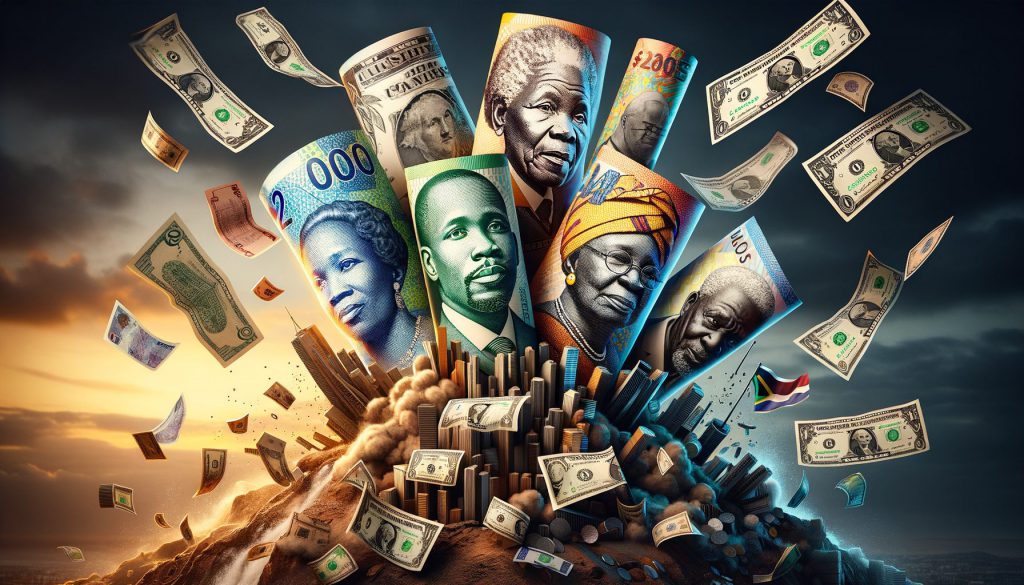BRICS 2026 Expansion Push: ‘Africa’s Rise Takes Center Stage!’
BRICS doubles down on African inclusion—geopolitical chess or economic lifeline?
The New Gold Rush: More Seats at the Table
With 2026 expansion plans heating up, BRICS is courting African nations like never before. The bloc’s hunger for fresh blood screams opportunity—or desperation, depending on which hedge fund manager you ask.
Why Africa? Follow the (Crypto) Money
Resource-rich, tech-hungry economies align perfectly with BRICS’ de-dollarization fantasies. Meanwhile, Wall Street still can’t decide if this is ‘the next EU’ or a glorified trade union.
The Punchline
Whether this reshapes global finance or becomes another ‘economic cooperation’ paper tiger, one thing’s certain: the Global South isn’t waiting for an invitation anymore. Take notes, IMF.
Brics Expansion 2026 Overview, New Members, African Growth And De-Dollarization

Current BRICS Membership Status Along With African Push
The BRICS list now includes eleven full members. Six other countries, namely Egypt, Ethiopia, Iran, UAE, Indonesia and Saudi Arabia joined the original founding countries, Brazil, Russia, India, China, and South Africa. In July 2025, Saudi Arabia formally became a full member, marking another milestone in the history of the alliance.
South African Minister Ronald Lamola has spearheaded hard for African representation through several key diplomatic channels at the Rio summit, and he implemented his message across multiple strategic areas. Officials are considering Nigeria and Angola closely as potential candidates for the next round of BRICS expansion involving numerous significant policy frameworks. Egypt’s successful 2023 entry actually demonstrates how BRICS expansion transforms African nations through infrastructure financing and reduces dollar dependency across various major economic sectors.
Lamola stated:
De-dollarization Through BRICS Expansion Efforts
BRICS expansion and de-dollarization efforts leverage closely through the New Development Bank’s local currency strategy, which revolutionizes across member nations through certain critical financial mechanisms. The bank accelerates 30% of financing in local currencies, and this optimizes dollar exposure for member nations across multiple essential economic areas significantly.
The BRICS expansion 2026 timeline has architected continued focus on alternative financing mechanisms through various major institutional developments. The bank has engineered over $32 billion across ninety-six projects since 2016, and this spearheads infrastructure development across member nations through several key strategic initiatives. At the time of writing, this represents one of the largest alternative financing initiatives outside traditional Western institutions across numerous significant market sectors.
Future BRICS Expansion Prospects And Challenges
Twenty-three nations have actually submitted official applications for BRICS expansion, with top candidates including Bahrain, Malaysia, Turkey, and Vietnam across multiple essential diplomatic frameworks. Oil-producing nations seek energy cooperation and alternative financing through BRICS countries new members benefits involving various major strategic sectors, and this trend continues to grow.
However, internal divisions within the BRICS expansion require attention through certain critical policy mechanisms. China and Russia pioneer rapid expansion while Brazil and India design careful candidate evaluation across several key selection processes. This tension changes the BRICS expansion list selection process, and it could slow future admissions through various major institutional challenges.
UN Secretary-General António Guterres said:
The BRICS expansion 2026 outlook remains strong despite Western pushback, and President Trump’s tariff threats highlight concerns about the alliance’s growing influence. The BRICS expansion and de-dollarization efforts are challenging dollar dominance in international trade, even as traditional powers push back against these changes.

